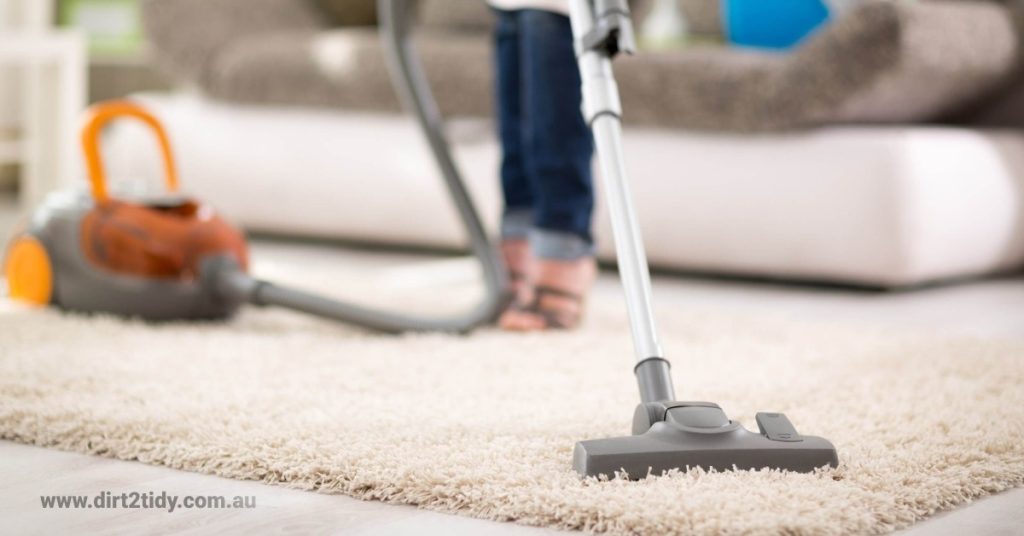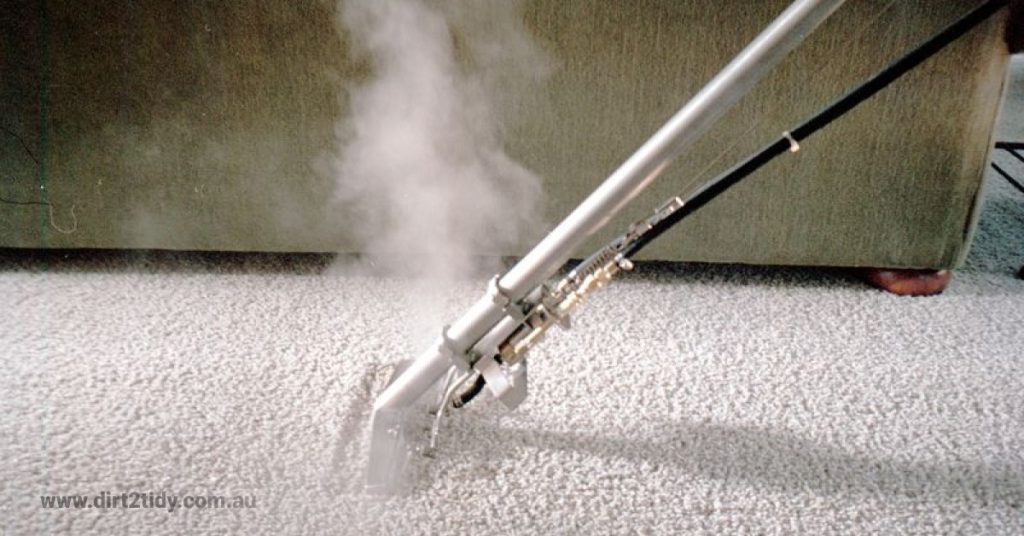Table of Contents
There are several techniques for cleaning carpets. Then there’s hot water extraction and dry cleaning for carpet or upholstery cleaning. This last method is likely the most successful in removing dust and grime from carpets. Hot water extraction has been used for many years to cure discoloured carpets and yields comparable cleaning results.
Although hot water and steam cleaning seem similar, they are two distinct techniques for removing dirt and stains from carpet.
Which technique is best?
Vacuuming
It should come as no surprise that a steam cleaner requires steam to function. Steam is produced when water is discharged through a heating source. It’s then forced out, like a steam iron’s button.
Steam cleaners range in size from small portable to hefty industrial. The steam pressure, water chamber size, and heating element quality and power are what differentiates them.
You may also like to read: Is steam cleaning carpet better than shampooing?
Steam cleaning is good for removing dust mites, germs, and stale carpet odours by surface cleaning. They’re also great for tiny messes. While steam may dislodge dirt particles on the surface of deeper piles, it is unlikely to penetrate into the carpet fibres. If you have a synthetic or low pile carpet, and it isn’t significantly discoloured, a steam cleaner should do the task well make sure you pre-vacuum it.

Why Pre-Vacuuming Matters Before Hot Water Extraction
Before you fire up the hot water extraction machine (or have a pro roll one into your living room), don’t skip the humble vacuum cleaner. Pre-vacuuming is a crucial step that sets the stage for a truly deep clean. Think of it as prepping your canvas before painting—a quick run with your regular vacuum removes dry soil, dust, and debris sitting on the surface and nestled deep in the carpet pile.
Extraction
If you have a deep piled carpet that needs cleaning, you should use hot water extraction. Hot water carpet cleaners require a lot more water than steam cleaners. Heat is applied to the water within a hot water carpet cleaner, but not to the point where steam is produced.
The hot water blasted out by this technique penetrates deep into carpet fibres use by most cleaning companies, washing away and releasing dirt and dust that lies between them.
To remove the stain or filth, a strong vacuum is used to suction the dirt from its hiding spot. For these reasons, most carpet manufacturers advocate water extraction for thorough cleaning. Now you know what steam cleaning and hot water cleaning are.
How often should carpets be professionally cleaned with hot water extraction?
Generally, most carpets benefit from hot water extraction cleaning once every 12 months. This keeps them looking fresh, extends their lifespan, and helps to quietly tackle all the hidden grime that vacuuming alone can’t reach.
However, if your home is a bustling hub for kids, pets, or has high foot traffic (think a busy hallway or a living room that hosts every family gathering), consider scheduling a clean every 6 months. This prevents the build-up of allergens, dust mites, and other unwelcome guests lurking below the surface.
Which is the best?
It all relies on the carpet’s design and dirt holding capacity.
If you don’t want to clean your own carpet, hire a professional. Dirt2Tidy has years of expertise and only uses the best cleaning procedures to ensure your carpet looks brand new.
Hot water extraction uses high-pressure water combined with cleaning chemicals to extract dirt, grime, and other impurities from carpets. This is followed by a strong vacuum to remove debris and restore your carpet to new.
Hot water extraction is vital for carpet cleaning. Using this carpet cleaning process has several advantages and dries quickly. Our powerful vacuums remove most of the water that has been pumped deep down into your carpet and as a result it dries naturally in just a few hours. This means you can get back to living on your freshly cleaned carpets sooner, without the lingering dampness that some other methods leave behind.To decide the best option for your carpets, contact your local carpet cleaning professional in Perth for cleaning methods are ask what your carpet manufacturers recommend them.
Why confirming the cleaning method matters
Before booking a carpet cleaning service, it’s worth your while to double-check exactly which method they’re planning to use. “Steam cleaning” gets tossed around a lot, but not everyone means the same thing—some companies lump both steam cleaning and hot water extraction under the same label, even though they work quite differently.
Confirming the actual process helps you avoid unexpected results like damage to your carpet, shrinking, or moisture problems that could lead to mould. The method recommended by your carpet’s manufacturer may also impact your warranty, so asking upfront protects both your carpets and your peace of mind.
Take a minute to clarify whether your cleaner uses hot water extraction or traditional steam, especially if your carpet is delicate, heavily soiled, or still under warranty. It’s a simple question that can save you a world of trouble in the long run.

Differences
The fundamental distinction between steam cleaning and hot water extraction is the procedure temperature. Steam cleaning employs actual steam, which needs boiling water to turn it from liquid to gas. Because there is no washing of the fibres, direct steam is not the greatest technique to remove stains and debris from carpets dry.
For water extraction, water must be heated enough to clean properly but not hot enough to turn to vapour. While steam is seen during hot water extraction cleaning, it is not pure steam.
Applications
Most carpet manufacturers advocate hot water extraction for stain removal. Natural fibre carpets and rugs should be cleaned at a lower temperature to minimise shrinkage. Hot water extraction is a versatile and safe cleaning method suitable for a wide range of carpet types, from synthetic fibres to natural wool. Because the cleaning solution and water temperature can be carefully controlled, it effectively removes dirt and stains without risking damage to the carpet fibres. This makes it a preferred option in both residential and commercial settings, especially for homes with delicate or high-value carpets. Whether you’re dealing with everyday dirt or more stubborn stains, hot water extraction delivers a thorough clean—without subjecting your carpets to excessive heat or mechanical stress. Steam cleaning, on the other hand, can cause stains to set in permanently.
Methods
Professionals use a cleaning solution to loosen and break up dirt before using water extraction. Then they pull hot water from the carpet fibres to clean them and remove grime and stains.
You may also like to read: How often should I steam clean my carpets?
Steam cleaners and extractors may be rented or purchased, but they can wet the carpet, leave detergent residue, and cause mould if not properly ventilated. Professional cleaners avoid leaving detergent residue, which attracts dirt and makes carpets filthy faster.
It’s important to note that for a carpet to be truly steam cleaned, there must be actual steam present—meaning the water needs to boil and produce gas. However, simply applying steam to a carpet doesn’t effectively rinse out the cleaning solution. This can leave behind both moisture and cleaning agents in the fibres, leading to rapid re-soiling and potential odours.
Using the right technique and equipment is crucial to ensure your carpet is thoroughly cleaned and dries quickly, without unwanted residue or moisture left behind. Professional Service vs. DIY Machines
One often overlooked step is vacuuming—professional cleaners always begin by thoroughly vacuuming the carpet to remove as much dry dirt and debris as possible. This step is essential, since home vacuums typically can’t match the suction power of professional, truck-mounted equipment. Skipping this step means wet cleaning can turn dirt into mud, embedding it even deeper into the fibres.
Another advantage of a professional clean is the drying process. Rental and consumer-grade machines simply don’t have the power to extract as much water from your carpet as professional equipment. As a result, carpets cleaned with DIY machines may stay damp for much longer, increasing the risk of mould, stains, and lingering odours.
Professional carpet cleaners remove excess water and dry carpets swiftly. By relying on expert methods, you ensure both a thorough clean and a speedy drying time—leaving your carpets fresh, residue-free, and less prone to rapid re-soiling.

Hot water extraction is eco-friendly
Hot water extraction is also eco-friendly. It uses water and high pressure to clean carpets without using chemicals. Allergy sufferers will not be affected, and children and pets are also safe. In comparison to other cleaning processes like bonnet cleaning and shampooing, hot water extraction can help extend the life of your carpet.
Regular cleaning not only preserves the quality and cleanliness of your carpets but also contributes to a healthier indoor environment by reducing allergens, dust, and other particulates. With hot water extraction, you get a deep clean that removes embedded dirt and debris—something that routine vacuuming or surface-level cleaning methods often miss.
Shampoos and dry cleaning chemicals might leave undesirable residues and odours. HWE cleaning chemicals are biodegradable and leave no residue after treatment. Hot water extraction leaves a residue-free carpet. Hot water extraction uses less water than steam cleaning and the waste water is not harmful to the environment and quick drying time.
By choosing hot water extraction, you’re not just giving your carpets a thorough clean—you’re also promoting a safer, fresher, and more comfortable home for everyone.
Customers rave about hot water extraction for revitalizing carpets, lifting stubborn stains, and restoring softness. Many appreciate the allergy-friendly nature of the clean, especially parents and pet owners who love that their kids and pets can safely play on freshly cleaned carpets. Reviews often highlight:
- Brighter, cleaner carpet fibres
- Faster drying time compared to other methods
- Homes feeling fresher with dirt and allergens removed
Overall, customers are satisfied with the improved look and feel of their space after a thorough, residue-free clean.


